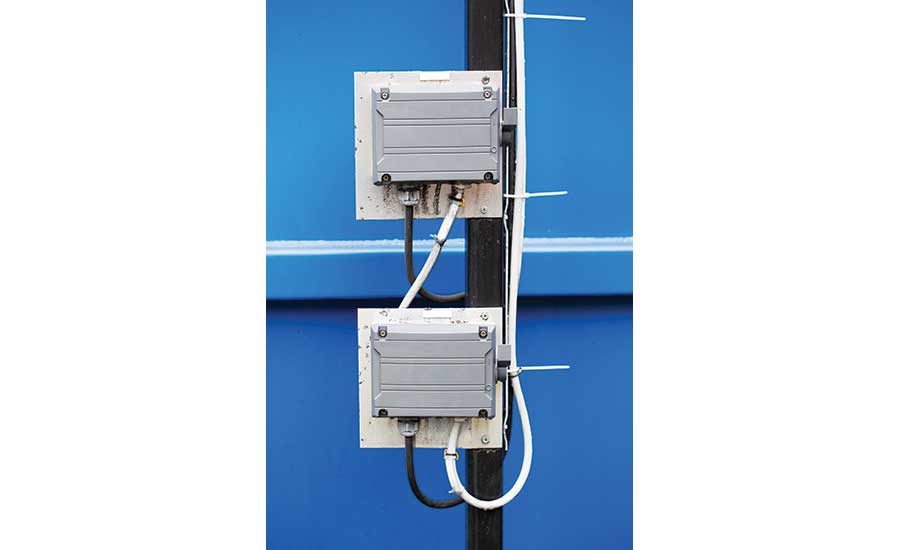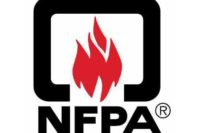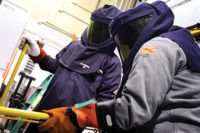Scope
Provisions of NFPA 70E® encompass safety-related work practices, safety-related maintenance requirements, and safety requirements for special equipment. The standard includes guidance for making hazard identification and risk assessments, selecting appropriate PPE, establishing an electrically safe work condition, and employee training. The NFPA 70E® gets updated every three years.
Why this standard is important
NFPA 70E® includes detailed tables for arc flash hazard identification and arc flash PPE categories in the 2015 edition. These tables require specific levels of personal protective equipment (PPE) for various types and ratings of electrical equipment. Certain tasks where the risk of an arc flash or shock hazard may be lower, such as normal operation of properly installed and maintained equipment, may not require the use of any special PPE.
Injuries from electric shock and arc flash hazards are the 6th leading cause of occupational fatality in the U.S. On average, approximately 2,000 workers each year are admitted for hospital treatment due to electrical burns.
Hazards
NFPA states that hundreds of deaths and thousands of burn injuries occur each year due to shock, electrocution, arc flash, and arc blast — and most could be prevented through compliance with NFPA 70E: Standard for Electrical Safety in the Workplace®.
Arc flash temperatures can reach or exceed 35,000 °F (19,400 °C) at the arc terminals. The energy released in the fault vaporizes the metal conductors involved, blasting molten metal and expanding plasma outward with massive force. A typical arc flash incident can be inconsequential but can produce a more severe explosion. This violent event can destroy equipment and injure or kill not only electrical workers but also bystanders. During the arc flash, electrical energy vaporizes the metal, which changes from solid state to gas vapor, expanding it with explosive force.
According to the U.S. Bureau of Labor Statistics, between 1992 and 2006, an average of 283 employees died per year from contact with electric current.
What employers should do
NFPA recommends that if you're responsible for ensuring workers are protected from shock and arc flash hazards, use the 2015 NFPA 70E® along with the 2014 NFPA 70®: National Electrical Code® (NEC®) and the 2013 NFPA 70B: Electrical Equipment Maintenance. Together, the "Big Three" help you protect your personnel and your company from tragic loss. NFPA 70E® is a vital tool for contractors, risk managers, engineers, building managers, owners, and everyone concerned with ending electrical-related accidents, liability, and loss.
Work practices covered by NFPA 70E® include installation, inspection, operation, maintenance, and demolition of electric conductors, electric equipment, signaling and communications conductors and equipment, and raceways. NFPA 70E® also addresses these work activities that can expose employees to electrical hazards: installation of conductors and equipment that connect to the supply of electricity; and installations used by the electric utility, such as office buildings, warehouses, garages, machine shops, and recreational buildings that are not an integral part of a generating plant, substation, or control center.
To protect workers from electric arc threats, identify potential arc hazards in the workplace, confirm potential and assess the severity of arc hazards by performing an arc hazard analysis, apply engineering solutions to reduce frequency and severity of exposure, train workers on the safe work practices and provide PPE as required in NFPA70E®.
Employees should seek training in understanding the nature of arc hazards and understanding the safe work practices in NFPA 70E®. One important form of protection from the heat of electric arc exposures is to wear flame-resistant (FR) protective apparel.
Employers should consider changes made to the 2015 Edition of NFPA 70E®. Arc flash expert Hugh Hoagland offered the following explanations in an e-hazard.com blog. These include (but are not limited to): maintenance must be part of an overall electrical safety program; repair of equipment must be completed by competent personnel; and test instruments must be included in the maintenance program. The mining exclusion has been removed from the 2015 Standard.
Hoagland says the 2015 edition signifies a shift in the approach to assessing risk. Identifying the hazard is the first step; estimating the potential severity of injury and likelihood of occurrence is the second step to determining the protective measures required. The impact of this shift is seen most noticeably in the tables regarding PPE selection and PPE categories.
Specific changes related to this include: 1) Definitions have been modified to accurately reflect the new terms. 2) There is no baseline “0” PPE category in the standard in 2015, although minimum PPE guidelines still exist and natural fibers are still required in under layers. 3) The arc hazard tables have been restructured, separating task from equipment. 4) The Task Table now specifically focuses on arc flash hazard identification only. It lists the task, equipment condition and whether PPE is required based on those two things. Insulated gloves and tools are no longer covered by the table. Hazard/Risk Category (HRC) has been replaced with PPE Category.
The new task-based table combines the previously separated ac and dc tables and makes them consistent for easier use, according to Hoagland. Type of task and condition of the equipment, taken together, determine whether PPE is required or not. The resulting “yes” or “no” is based on the assessment of risk—the likelihood arc flash may occur—instead of hazard identification alone. For example, reading a panel meter while operating a meter switch, in any condition, requires no PPE.
The separate equipment-based tables, one for ac and one for dc systems, list the types and parameters of equipment to allow for PPE and boundary determination regardless of task. For example, metal-clad switchgear of 1 kV through 15 kV requires Category 4 PPE and an arc flash boundary of 12 m (40 ft.)
Annex H outlines what was “HRC 0” PPE for arc flash exposures less than 1.2 cal/cm², so functionally HRC 0 still exists, but the tables have upgraded to Arc-Rated Clothing PPE Category 1 (ARC 1) for low level hazards when any PPE is required.
HRC 0 is removed. The new table specifies work within the arc flash boundary; if no arc flash hazard exists, there is no need for PPE. If any protection is needed for arc flash, 100 percent natural fibers, which were permitted in HRC 0, are now considered inadequate.
HRC is out; ARC is in, according to Hoagland. The term ARC, or Arc-Rated Clothing, is not required by the standard but it is commonly used. The standard refers to the old HRC as PPE Level.
NFPA 70E® 2015 adds a boundary to the use of conductive articles, such as jewelry or metals. They shall not be worn within the restricted approach boundary (or, as before, where they present an electrical contact hazard with energized conductors or circuit parts).
The standard clarifies that either the incident energy analysis method or the arc flash PPE categories method can be used for the selection of PPE, but not both. Nor can an incident energy analysis be used to specify an arc flash PPE category, according to Hoagland.
The standard also clarifies when normal operation of electric equipment without PPE is permitted.
Any electrical equipment that may need adjustment, servicing or maintenance while energized shall, according to the new standard, be field-labelled.
Resources: NPFA Codes and Standards Catalog http://catalog.nfpa.org
Sponsor: www.workrite.com, 1-800-521-1888







